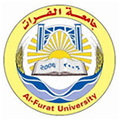آخر الأخبار
تاثير درجة الملوحة على بعض فطور التربة في البيىْات الغذاىْية الساىْلة
2010, Volume 2, issue 5,pp 89-102| Cite as
Effect of Salinity Degree on Soils Fungi in Liguid Nutrient Medias
| authors |
Abed al-Salam Al-Dahmmosh |
| Abstract |
A laboratory experiment was carried out to study the effect of salinity degree on some Soil's Fungi (Rhizopus sp - Mucor sp - Penicillium sp - Trichoderma sp - Aspergillus sp ) in liquid nutrient medias by using soil extract at different salinity levels ( from 1.22 to 18.39) and different levels of Nacl ( from 1 to 1.6%) that , respectively. The study showed that: The Aspergillus sp was able to grow in soil extract until 10.6 m/ds, and the biomass of the growth fungi had found at 16.85 mmos/cm, and the same thing was found in Mucor sp- Penicillium sp cases with different in biomass at every level of salinity. The fungi shows a high ability on decreased the salinity of media by forming the intense mycelium. The Rhizopus sp showed a high sensitive for salinity, and the decrease appeared early at 4.48, and the biomass generally was little In the different concentrations of Nacl ( with high values of EC .) the fungi were grown ( although it was in a little quantities) this indicated to the ability of these species to growth in high salinity stress media , and there are a possibility to use it in bio reclamation in salt effected soils or when we use saline water for irrigation This result was to sure on the possibility of present the fungi activity of this species under hard environmental conditions Keyword : common soil fungi – salt concentration – salinity resistance. |
| الكاتب |
عبد السلام الدهموش |
| الملخص |
تجربة مخبرية لدراسة تأثير درجة الملوحة على بعض فطور التربة Penicillium Trichoderma sp -Aspergillus sp - Rhizopus sp -Mucor sp -sp في البيئات الغذائية السائلة ، باستخدام مستخلصات تربة ذات مستويات ملوحة متباينة من (1.22-16.39) ميلليموز/ سم ، ثم استخدمت تراكيز مختلفة من ملح كلوريد الصوديوم (1% - 16%) و التي توافق على التوالي 21.6-185.5) ميلليموز سم لإحداث مستويات مختلفة من الملوحة . وخلصت هذه الدراسة إلى قدرة فطر ال Aspergillus sp من النمو في مستخلصات تربة ذات تراكيز حتى (10.6) ميلليموز/سم حيث تم رصد كتلة حية للنمو الفطري حتى المستوى ( 16 . 85 ) ميلليموز /سم و السلوك ذاته وجد عند الفطر Penicillium sp Mucor spمع تباين في الكتلة عند كل مستوى ملوحة . كما أبدت هذه الفطور قدرة عالية على خفض درجة ملوحة البيئة من خلال تشكيلها للكتلة الميسليومية الكثيفة أما الفطر Rhizopus sp فقد أبدى حساسية عالية لملوحة البيئة الغذائية السائلة حيث ظهر انخفاض مبكر عند مستوى الملوحة (4.48)ميلليموز اسم وكانت كتلته الحية بشكل عام ضعيفة . أما عند استخدام تراكيز مختلفة من NaCl في البيئة الغذائية السائلة و بالرغم من ارتفاع قيم ال EC لهذه البيئات بشكل كبير فقد تم رصد نمو لهذه الفطور و لو بكميات قليلة ، و هذا مؤشر على قدرة هذه الأجناس الفطرية على النمو في بيئات ذات إجهاد ملحي عالي و يمكن الاستفادة منها في الاستصلاح الحيوي للترب المتأثرة بالملوحة أو عند استخدام مياه ري ذات محتوی ملحي عالي ، و هذه النتيجة تؤكد على إمكانية وجود نشاط فطري لمثل هذه الأجناس تحت هذه الظروف البيئية القاسية . |














